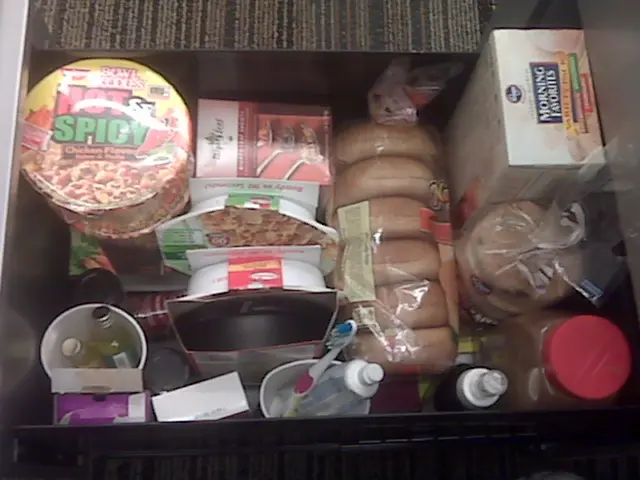Surgical Procedure for Heart and Lung Support: Details, Applications, and Insights
In the realm of medical technology, two techniques – Cardiopulmonary Bypass (CPB) and Veno-Venous Extracorporeal Membrane Oxygenation (V-V ECMO) – play crucial roles in supporting patients with heart and lung problems.
Functions
Cardiopulmonary Bypass (CPB) temporarily takes over both the heart and lung functions during cardiac surgeries, such as coronary artery bypass grafting (CABG). It oxygenates and circulates blood while the heart is stopped for surgery.
On the other hand, V-V ECMO supports only the lungs by oxygenating and removing carbon dioxide from the blood but relies on the patient's heart to pump blood. It is primarily used for severe respiratory failure, providing lung support without cardiac support.
Indications
CPB is used exclusively in the operating room during heart surgeries, including valve repair, CABG, and other cardiac procedures where the heart must be stopped or its function temporarily replaced.
V-V ECMO, meanwhile, is used as a rescue or bridge therapy for patients with severe lung failure (e.g., ARDS, severe pneumonia including COVID-19) when mechanical ventilation is insufficient. It provides lung rest and time for recovery.
Duration of Use
CPB is used intraoperatively and typically lasts only for the duration of the surgery, usually a few hours (e.g., 3 to 6 hours for CABG). Prolonged CPB time (>4 hours) is associated with increased risk of complications and mortality.
V-V ECMO, however, can be used for longer durations, ranging from several hours up to weeks, depending on patient recovery. The weaning process off ECMO usually takes several days (2-5 days), with total duration guided by lung recovery and clinical status.
Summary Table
| Aspect | Cardiopulmonary Bypass (CPB) | Veno-Venous ECMO (V-V ECMO) | |---------------------|------------------------------------------|-----------------------------------------------| | Function | Temporarily replaces heart and lungs | Supports lungs only; heart function retained | | Indications | During cardiac surgery requiring stopped heart | Severe respiratory failure (e.g., ARDS, COVID-19) where lungs need support | | Duration | Hours (usually 3-6 hours during surgery) | Hours to weeks; continuous support possible | | Typical Setting | Operating room (intraoperative) | Intensive care unit (postoperative or critical care) |
While both techniques are essential in modern medicine, it is crucial to understand their differences and appropriate uses. CPB is a short-term, intraoperative tool replacing heart and lung function during cardiac surgery, whereas V-V ECMO is a longer-term respiratory support technique used mainly in critical care settings to support lung function in cases of respiratory failure without cardiac dysfunction.
- In the field of cardiovascular health, both Cardiopulmonary Bypass (CPB) and Veno-Venous Extracorporeal Membrane Oxygenation (V-V ECMO) are significant medical advancements, each playing distinct roles in health-and-wellness.
- During cardiac surgeries, such as coronary artery bypass grafting (CABG), the technique of CPB temporarily replaces the heart and lung functions, while V-V ECMO is primarily employed for severe respiratory failure cases like ARDS, even including COVID-19, to provide essential lung support.
- These techniques, while integral to science and medical-conditions, have varying durations - CPB is primarily used during surgery for hours (3 to 6 hours for CABG), though prolonged use leads to increased risks, whereas V-V ECMO can be used for several hours up to weeks, depending on the patient's recovery.




